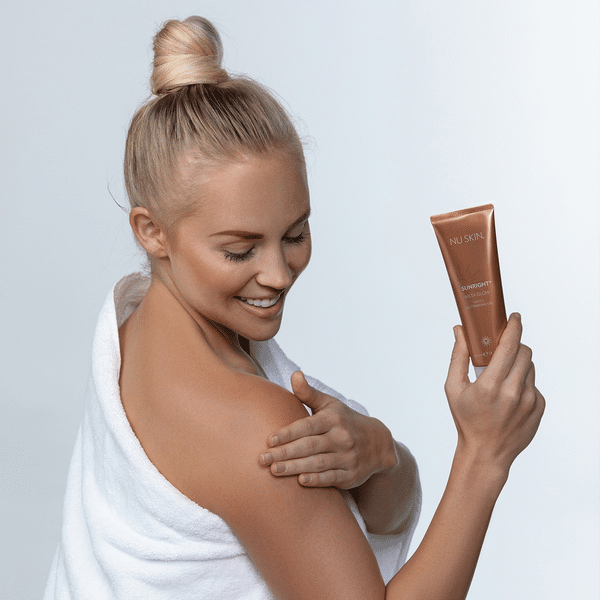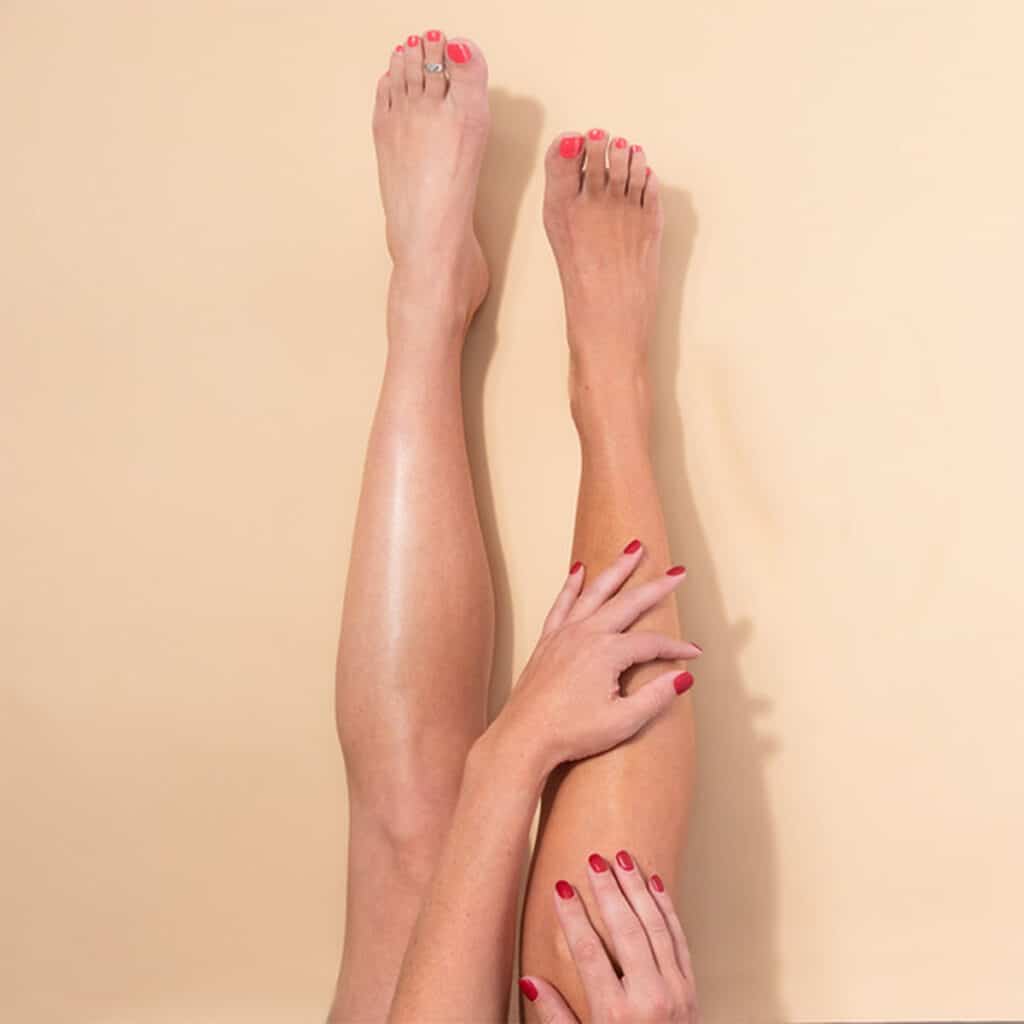Preparation Work
Nu Skin Sunright sunscreen requires good preparation before actual use to enable it to work effectively. Based on various dermatological studies, dirty skin, in particular, with oil, dust, or any other kind of pollutant, can hinder the efficiency of absorption by about 25% to 30%. In areas where humidity is above 60%, too much secretion of oil further clogs the sunscreen’s absorption mechanism. Deep cleansing with a gentle facial cleanser is the first step toward effective improvement in sunscreen mechanism.
One intriguing experiment showed that the application of sunscreen to moist skin reduces its protective effectiveness by 20%, compared with an application on dry skin. The reason for this is that a very thin film appears on the skin surface, interfering with uniform spreading and deep absorption of sunscreen. People frequently apply sunscreen directly after washing their face or right after showering, without paying attention to this detail, which leads to incomplete formation of the sunscreen film and remarkably lower protection.

Another very important aspect is the time management of the application. Various studies have shown that the optimal time required for the proper absorption of sunscreen into the skin is from 15 to 30 minutes; this product should be applied within the above-mentioned timeframe prior to exposure to the sun to make certain that the sunscreen forms a protective barrier on the skin. Others remember to apply only when they are about to leave the house, hence their skin is already exposed in the first 30 minutes to harmful UV rays.
The American Academy of Dermatology says, “Forgetting to apply sunscreen ahead of time, especially during peak UV hours between 12 pm and 3 pm, can heighten one’s chances of sunburn by 5% to 10%”. It raises not only the possibility of sunburn but also quickens skin aging due to the destruction from UV rays.
Long-wave UV rays (UVA) are considered one of the main reasons for skin aging in scientific studies concerning skin protection. UVA manages not only to penetrate the epidermis but even goes down to the dermis, causing damage to collagen and elastin fibers, which leads to skin sagging and deepening of wrinkles. Sunscreen protects against UVA damage, but only if it is fully absorbed and covers the concerned areas of the face or body. Dermatologists suggest applying a measure of 2 mg per 2 square centimeters of skin, which is commonly absent since many people use only half of that amount, very much reducing protection.
Its surface area is about 20 square centimeters, meaning that at least 0.5 grams of sunscreen is needed to cover the whole face and neck. Most consumers use very little; directly influencing the actual effectiveness of the sunscreen. If a small quantity of sunscreen is used, the actual Sun Protection Factor may drop over 40 percent. It ensures the product covers the face and other exposed areas well and forms an effective barrier in record time when skin is dry, and application is adequate. Dermatological associations report that full cleaning and drying of skin, with the application of adequate sunscreen, may improve UV protection efficiency by about 20%.
Application Steps
Many people also foster the illusion that a thin layer of sunscreen will get them through, which may indeed result in losing more than 50% of sun protection. The right amount and manner are everything. When using Nu Skin Sunright, pay particular attention to covering those areas which are most commonly exposed to the sun, like the face, neck, and arms.
This means that 2 mg of sunscreen is needed per square centimeter and that for the face alone, an amount of roughly 1.5 to 2 grams is required to provide a proper layer of protection; this goes higher according to the surface area for other areas of skin that are exposed. This is quite more than what most people usually use but is the bare minimum in order to provide the protection ratings stated.
The most common mistake made by people is to leave out some of the “hidden areas” that are usually very exposed to UV radiation. Generally, if one does not apply sunscreen well enough, its protective effect will be poorly expressed. In one dermatological study, 35% of the facial area is often missed while applying sunscreen, causing faster localized aging of skin and increasing sunburn. Applied correctly, ensure each location is well-smothered, massaging the sunscreen in until fully absorbed.
As Nu Skin Sunright serves first and foremost as protection from both UVA and UVB rays, this entails active protective ingredients actually sinking into the skin. One should allow considerable time for absorption after application of the sunscreen—that is, about 15 to 30 minutes. Most people have the tendency to go out in the sun immediately after applying sunscreen, which reduces protection by at least 10% to 15% under high UV index conditions.
Sunscreen ingredients need time to oxidize when in contact with air and form a protective film on the skin surface. If exposed to strong sunlight too early, the sunscreen ingredients may not be fully activated, directly affecting their ability to block UV rays. Most sunscreens remain effective for about 2 hours, requiring regular reapplication, especially during outdoor activities, sweating, or water exposure. Although Nu Skin Sunright has some water resistance, exposure to water for over 40 minutes will significantly reduce its effectiveness. Without timely reapplication, the risk of skin damage increases by 20% to 30%, and cumulative UV damage can lead to long-term health issues like premature aging and a higher risk of skin cancer.
Precautions
When using Nu Skin Sunright, there are some key precautions to follow to ensure optimal protection. Reapplication is critical. Regardless of how high the SPF of your sunscreen is, its effectiveness decreases within 2 hours. Especially when exposed to outdoor sunlight, sweating, or swimming, the protective barrier is easily washed or rubbed off. In this case, protection may decrease by 20% to 40%, so timely reapplication is essential, particularly during peak UV times from 10 AM to 3 PM.
Many people apply too little sunscreen in an attempt to save product, but the effectiveness of sunscreen is directly related to the amount applied. Dermatologists recommend using 2 mg of sunscreen per square centimeter of skin, and for full-body protection, about 30 grams of sunscreen is typically required.
If you apply only a small amount, the actual SPF may drop by 50% or more. Be sure to avoid getting sunscreen in your eyes. While Nu Skin Sunright is dermatologically tested, the skin around the eyes is sensitive, and certain ingredients in sunscreen may cause irritation. If sunscreen accidentally gets into the eyes, rinse thoroughly with water. This is especially important for children, who may unintentionally get sunscreen in their eyes while playing, so be extra careful when applying sunscreen to children, and avoid the eye area.
Water-resistant sunscreens can maintain protection for 40 to 80 minutes after water exposure, but this also depends on the intensity of your water activity. Even for water-resistant products, you still need to reapply sunscreen after prolonged swimming or sweating to maintain a protective barrier. Although sunscreen is an effective tool for blocking UV rays, it can’t completely block all UV radiation. In particularly intense sunlight, sunscreen alone is insufficient, and additional protective measures are needed. Studies show that combining sunscreen with physical protective measures like hats, UV-protective clothing, or umbrellas can reduce the likelihood of sunburn by more than 70%.
Choosing SPF
Choosing the right SPF is a key part of using Nu Skin Sunright. Many people assume that the higher the SPF, the better, but choosing the right SPF for your needs is what truly ensures effective protection. SPF (Sun Protection Factor) indicates how much UVB radiation a sunscreen can block, not UVA radiation. SPF 30 sunscreen blocks about 97% of UVB rays, while SPF 50 blocks about 98%, a difference that’s not as significant as many might think.
For regular outdoor activities like commuting or shopping, SPF 30 is sufficient. However, if you plan to spend extended periods outdoors, such as on a beach holiday, during outdoor sports, or hiking, it’s recommended to use SPF 50 or higher. This not only helps cope with intense UV exposure but also reduces the risks of photoaging and sunburn due to prolonged sun exposure.
Skin type also affects your SPF choice. Individuals with fair, sensitive, or sunburn-prone skin should opt for SPF 50 and above to provide more comprehensive protection. Dermatologists report that fair-skinned individuals are three times more likely to get sunburned than those with darker skin, so a higher SPF is essential. Conversely, if you have darker skin and are less prone to sunburn, SPF 30 usually provides adequate protection.
Time of day is another factor to consider when selecting SPF. If you’re outside between 10 AM and 3 PM, during peak UV hours, higher SPF products are recommended. Studies show that in strong sunlight, skin can start to suffer UV damage in as little as 15 minutes if not protected by a high enough SPF. In these cases, SPF 50 or higher products effectively reduce the risk of skin damage.

Environmental factors also play a role in SPF selection. In high-reflective environments like beaches or snowy areas, UV intensity can increase by 25% to 50%. Even if SPF 30 is enough for daily life, in these special environments, you may need to switch to SPF 50 or higher to deal with the high UV reflection. Additionally, UV intensity increases with altitude. For every 300 meters of elevation, UV intensity increases by about 4%, so higher SPF sunscreen is necessary for activities at higher altitudes.
It’s important to note that SPF primarily refers to protection against UVB, but broad-spectrum protection is equally important. Nu Skin Sunright provides broad-spectrum protection, guarding against both UVB and UVA. UVA rays are the primary cause of photoaging. While they don’t cause sunburn directly, they penetrate deep into the dermis, damaging collagen and elastin, leading to sagging skin and wrinkles. Choosing sunscreen labeled for broad-spectrum protection ensures coverage against both UVA and UVB rays.
Even with high SPF products, it’s crucial to reapply sunscreen regularly. In particular, prolonged outdoor exposure, sweating, or swimming reduces the sunscreen’s effectiveness over time. Research shows that high SPF sunscreens lose 20% to 30% of their protective power after 40 to 80 minutes in water. Therefore, regardless of SPF, it’s essential to reapply every two hours when spending extended periods in the sun.



